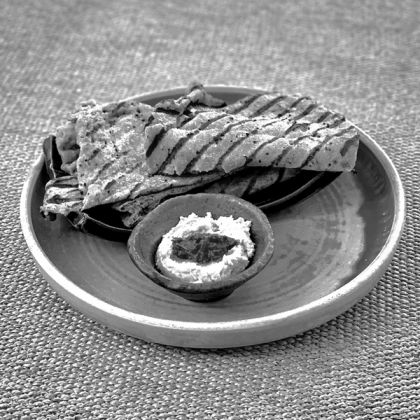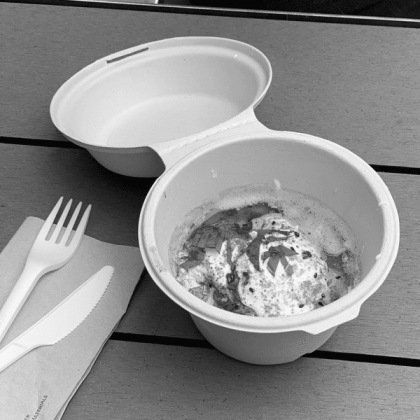Swine flu has garnered one so-far-unremarked achievement: we now know just how medieval citizens, living in walled towns, felt when the barbarians were at the gate.
The fear. The uncertainty. The dread. The waiting.
Just like our medieval counterparts, we wait for a solution, a saviour to come riding over the hill to rescue us. Vaccine? Tami flu? The correct way to blow your nose when in public? Hand-washing? Drinking a bottle of brandy?
Actually, the bottle of brandy idea isn’t entirely a joke, as I read about its curative properties many years ago, in a piece called “How To Cure a Cold”:
“One tall silk hat, one four poster bed, one bottle of brandy. To be taken as follows: put the tall silk hat on the right-hand post at the foot of the bed, lie down and arrange yourself comfortably, drink the brandy, and when you see a tall silk hat on both the right and left bedposts you are cured’.
Voila! They don’t make many cures like this old French cure anymore, but as the great food writer M.F.K. Fisher noted in her book “A Cordiall Water”, a collection of recipes designed to cure the ills of men and beasts, “This may be a somewhat Gallic exaggeration, but it is based on sound sense…”
It might make sound sense to a binging teenager, but the rest of us would more likely be killed than cured by MFK’s boozy solution. But if swine flu is going to simply make an awful lot of us feel pretty awful, how can what we eat help us back to health?
Before modern medicine, we looked first and foremost to the curative power of certain foods, and maybe it’s something that today we neglect at our peril.
“For thousands of years it has been well known that food substances, especially plants like mint, turmeric, garlic, onion, lemon and ginger are highly effective as medicines”, writes Dr Stephen Fulder in his book, “Ginger: The Ultimate Home Remedy”. Dr Fulder’s recipe for “Ginger Tea for Fevers and Colds” couldn’t be simpler:
“Grate a small piece of fresh ginger of about one gram (about the size of half a sugar cube) into a glass. Add lemon juice from about half a lemon, fill with hot water and add a little honey to sweeten”.
This encourages sweating and brings out low grade fevers and colds, writes Dr Fulder. The recipe puts me in mind of my own first-resort drink whenever anyone in the house is feeling low. “Stina’s Healing Tea” is a recipe I found in a book by the American writer Viana la Place:
1 sprig each sage, basil, marjoram and spearmint
1 thin slice lemon
1 cup spring water
half teaspoon honey
2 teaspoons brandy
Simmer together herbs, lemon and water for 10 to 15 minutes. Stir in honey, cover, and let steep for 5 minutes. Stir in brandy and drink.
Certain foods attract many champions on account of their healthful qualities and curative powers, their ability to keep us well and to bring us back from a period of ill-health.
In “The Sprouters Handbook”, for example, Edward Cairney writes that “Sprouts are truly a superfood in a league of their own”, and he goes on to point out that “if the early seafarers had known about sprouts, they would not have suffered from scurvy… sprouts have such a complete nutritional profile as to allow us to live on them and nothing else”.
Well, that may be so, but it doesn’t sound like the ideal lifestyle choice. But Cairney isn’t talking about Brussels sprouts, of course, but about the process of sprouting pulses, nuts and grains – such as alfalfa, chick peas, lentils, oats and so on – by soaking the seeds in water, then draining and letting them sprout. The enzymes we then access through the sprouts “play vital roles in everything from eliminating toxins to acting as crack frontline troops in our immune systems”.
I like sprouts – and buy them in farmer’s markets where they are often available – but my favourite cure is one of the most ancient of all. An old Provençal saying is: “Aïgo boulido sauova la vida. Boiled water saves your life”.
Boiled Water
1 litre water
salt
12-15 garlic cloves
1-2 bay leaves
1-2 sprigs sage
5 tabs olive oil
slices of dry bread
grated cheese (Parmesan, or Gabriel or Desmond)
In a saucepan, salt the water, add the garlic, and bring to the boil. After 10 minutes, add the bay, sage and a dash of oil. Let cook for a few minutes more, then take the pan off the heat, cover, and allow the soup to stand for about 10 minutes. Strain. Put the bread slices into a warmed soup bowl, cover with grated cheese, sprinkle with the remaining oil, and pour over the strained infusion”.
I feel better already.
John McKenna
The Perfect Cure
Archive - all the best places to eat, shop and stay in Ireland. A local guide to local places.






